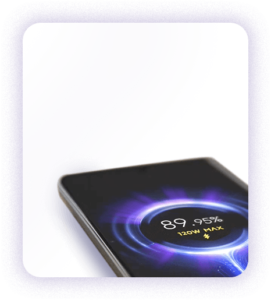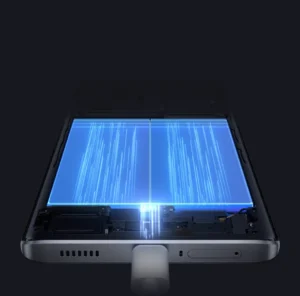Introduction:
In the fast-paced world of smartphones, where technology evolves at an unprecedented rate, one aspect that often takes a backseat in user awareness is the impact of used charging on battery health. Smartphones have become an indispensable part of our daily lives, and understanding how the charging habits affect their longevity is crucial. This article aims to shed light on the intricacies of used charging, particularly focusing on Diminishing 1 (Dimincty 1) and its implications.
I. The Basics of Smartphone Batteries:
Before delving into the nuances of used charging, it’s essential to grasp the fundamentals of smartphone batteries. Most modern smartphones are powered by lithium-ion (Li-ion) batteries due to their high energy density and rechargeability. These batteries consist of positive and negative electrodes separated by an electrolyte, allowing the flow of ions during charging and discharging.
II. Diminishing 1 (Dimincty 1) and Its Significance:
Diminishing 1, often abbreviated as Dimincty 1, refers to the gradual reduction in a battery’s capacity over time and repeated charge cycles. This phenomenon is an inherent characteristic of lithium-ion batteries and is influenced by various factors such as temperature, charging patterns, and the quality of the battery itself.
1.1 The Science Behind Dimincty 1:
Dimincty 1 occurs as a result of chemical reactions within the battery during charge and discharge cycles. Over time, these reactions cause the electrodes to degrade, leading to a decrease in the battery’s capacity. This reduction in capacity is often measured as a percentage of the original capacity, and it is a key determinant of a smartphone’s overall battery health.
III. Understanding Used Charging:
Used charging, or the act of repeatedly charging and discharging a smartphone, is a common practice among users. However, not all charging habits are created equal, and certain practices can accelerate Dimincty 1 and negatively impact battery health.
3.1 Charging Cycles and Their Impact:
A charging cycle is defined as the process of charging a battery from 0% to 100% and then discharging it back to 0%. Lithium-ion batteries have a limited number of charging cycles before they start experiencing capacity degradation. It is crucial to understand how different charging patterns, such as partial charges and deep discharges, can influence the overall health of the battery.
3.2 Temperature Considerations:
Temperature plays a significant role in the performance and longevity of smartphone batteries. Extreme temperatures, whether too hot or too cold, can accelerate Dimincty 1 and lead to permanent damage. Users should be mindful of environmental conditions when charging their devices to ensure optimal battery health.
IV. Best Practices for Prolonging Battery Life:
Given the inevitability of Dimincty 1, users can adopt certain practices to mitigate its impact and prolong the overall lifespan of their smartphone batteries.
4.1 Optimal Charging Levels:
Keeping the battery level within a moderate range, typically between 20% and 80%, can help reduce stress on the battery and slow down Dimincty 1. Avoiding frequent full discharges and charges to 100% can contribute to prolonged battery health.
4.2 Charging Speed and Adapters:
While fast charging technologies have become popular, they can generate more heat, potentially accelerating Dimincty 1. Using the manufacturer’s recommended charging adapter and cable, and avoiding third-party accessories, can help maintain a balance between charging speed and battery health.
V. The Role of Software in Battery Management:
Smartphone manufacturers often implement software optimizations to enhance battery management and mitigate the effects of Dimincty 1. Operating system updates may include improvements in power management algorithms, optimizing background processes, and providing users with tools to monitor and manage their battery usage.
VI. Recycling and Sustainable Practices:
As batteries inevitably degrade over time, proper disposal and recycling become crucial for environmental sustainability. Many smartphone manufacturers and organizations offer recycling programs to responsibly dispose of old batteries, preventing environmental harm and promoting the reuse of valuable materials.
Conclusion:
In the ever-evolving landscape of smartphone technology, understanding the impact of used charging on battery health is paramount. Dimincty 1 is an inherent aspect of lithium-ion batteries, and users can adopt best practices to mitigate its effects. By embracing optimal charging habits, being mindful of temperature conditions, and staying informed about software optimizations, users can prolong the lifespan of their smartphone batteries and contribute to a more sustainable technological future.
Faq:
At what percentage should a phone be charged?
The general recommendation is to keep your phone’s battery level between 20% and 80%. Avoiding both full discharges and charging to 100% helps mitigate the effects of battery degradation over time.
2. Should I limit my phone battery to 85 percent?
While limiting the battery to 85% can reduce stress on the battery and slow down degradation, it may be impractical for daily use. Aim to keep your battery level between 20% and 80%, as this range balances practicality with optimal battery health.
3. What is the right way to charge your phone?
The right way to charge your phone involves maintaining a moderate battery level (20-80%), using the manufacturer’s recommended charging adapter and cable, and avoiding frequent full discharges. Additionally, avoid exposing your phone to extreme temperatures during charging.
4. What is the principle of charging a phone?
Charging a phone involves the flow of electric current into the battery, causing a chemical reaction that stores energy. This stored energy is then used to power the phone when needed. The principle is to manage this process in a way that maximizes battery life and minimizes degradation.
5. What is the 20 to 80 battery rule?
The 20 to 80 battery rule suggests keeping your phone’s battery level between 20% and 80% to optimize battery health. By avoiding the extremes (0% and 100%), you can slow down the degradation of the battery over time.
6. What is the proper way to charge an Android phone?
The proper way to charge an Android phone is to follow general charging principles, such as maintaining a battery level between 20% and 80%, using the manufacturer’s recommended charging accessories, and avoiding extreme temperatures during charging.
7. What is the 30 90 rule for battery?
The 30 90 rule is a variation that suggests keeping your battery level between 30% and 90%. This wider range still provides some flexibility for users while aiming to balance practicality with optimal battery health.
8. What is 80 30 rule battery?
The 80 30 rule is not a commonly recognized guideline. It’s generally recommended to keep the battery level between 20% and 80% to balance the trade-off between practicality and battery health.
9. Is 20 to 80 charging good?
Yes, keeping your phone’s battery level between 20% and 80% is considered good practice. This range helps to extend the overall lifespan of the battery by minimizing the stress and degradation associated with full discharges and charges to 100%.




